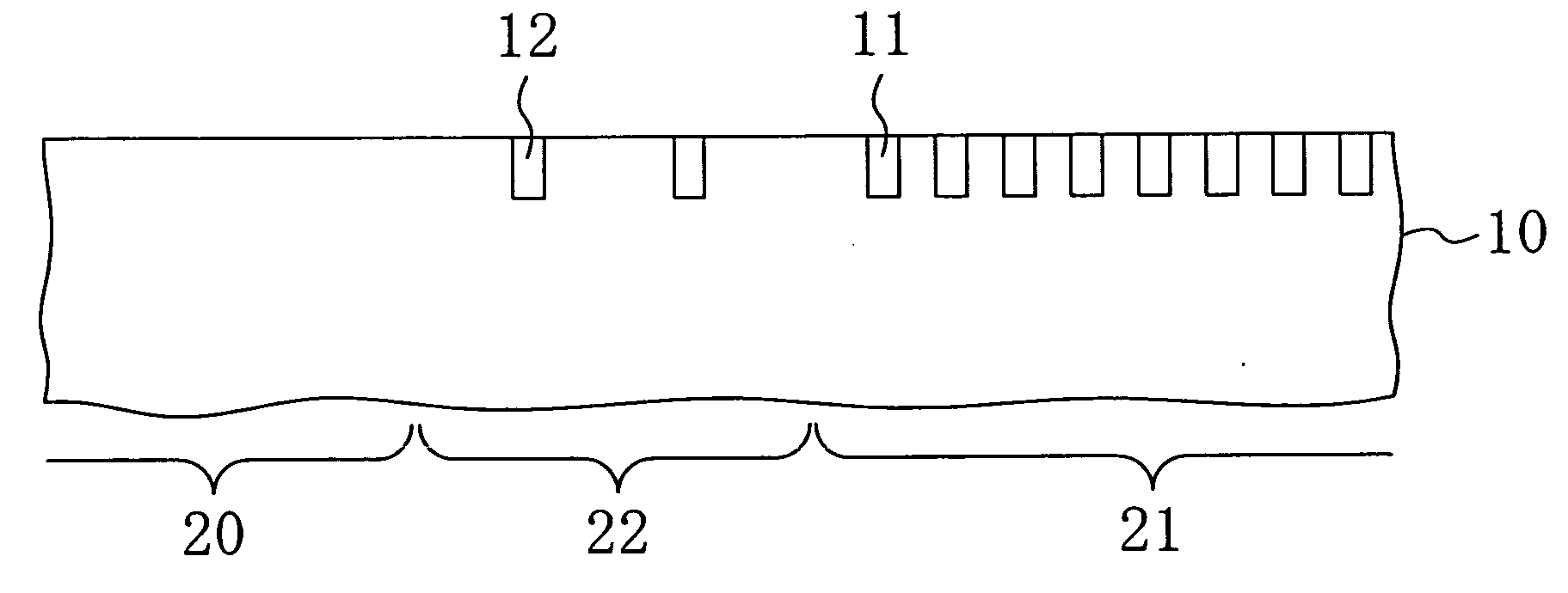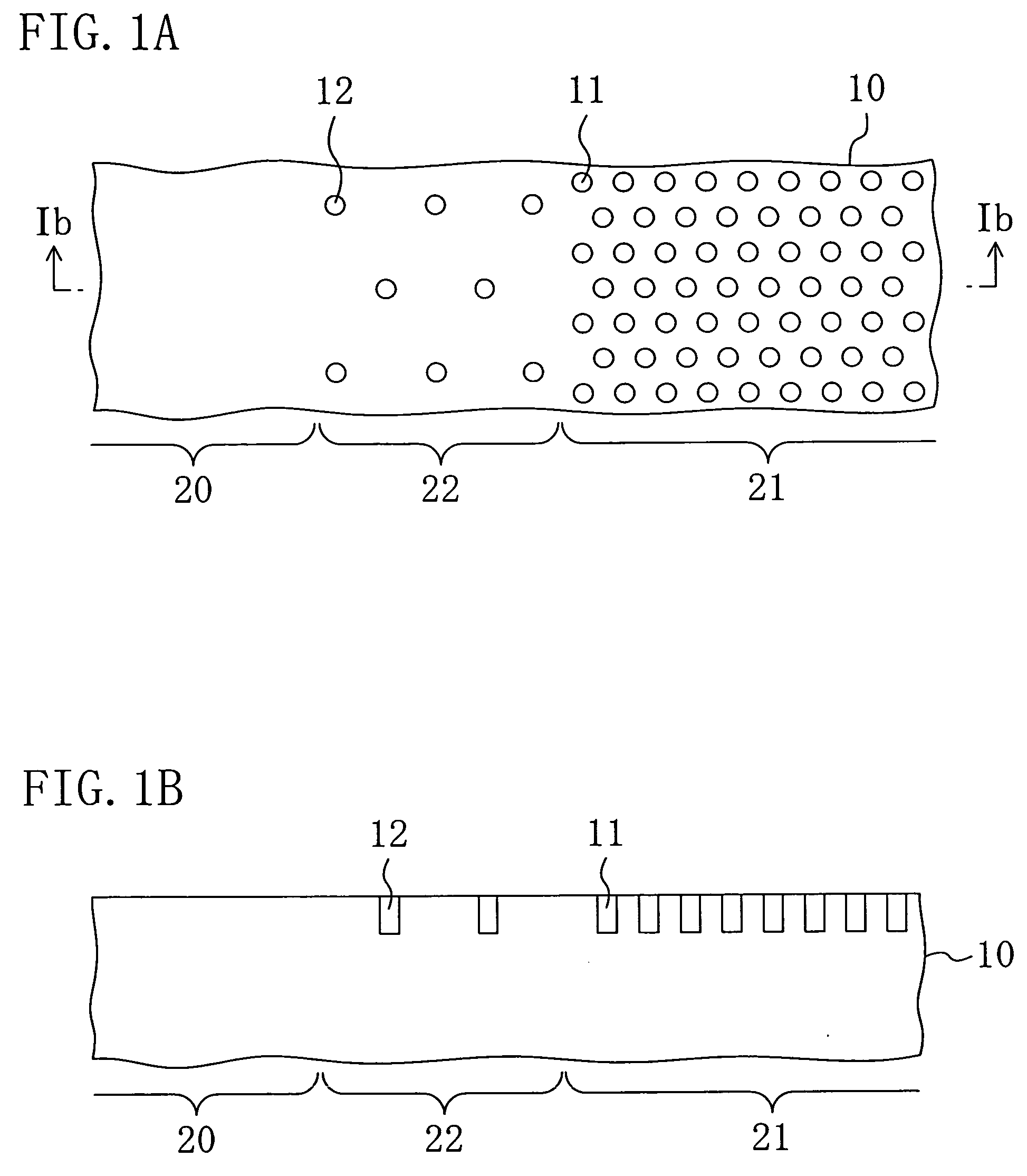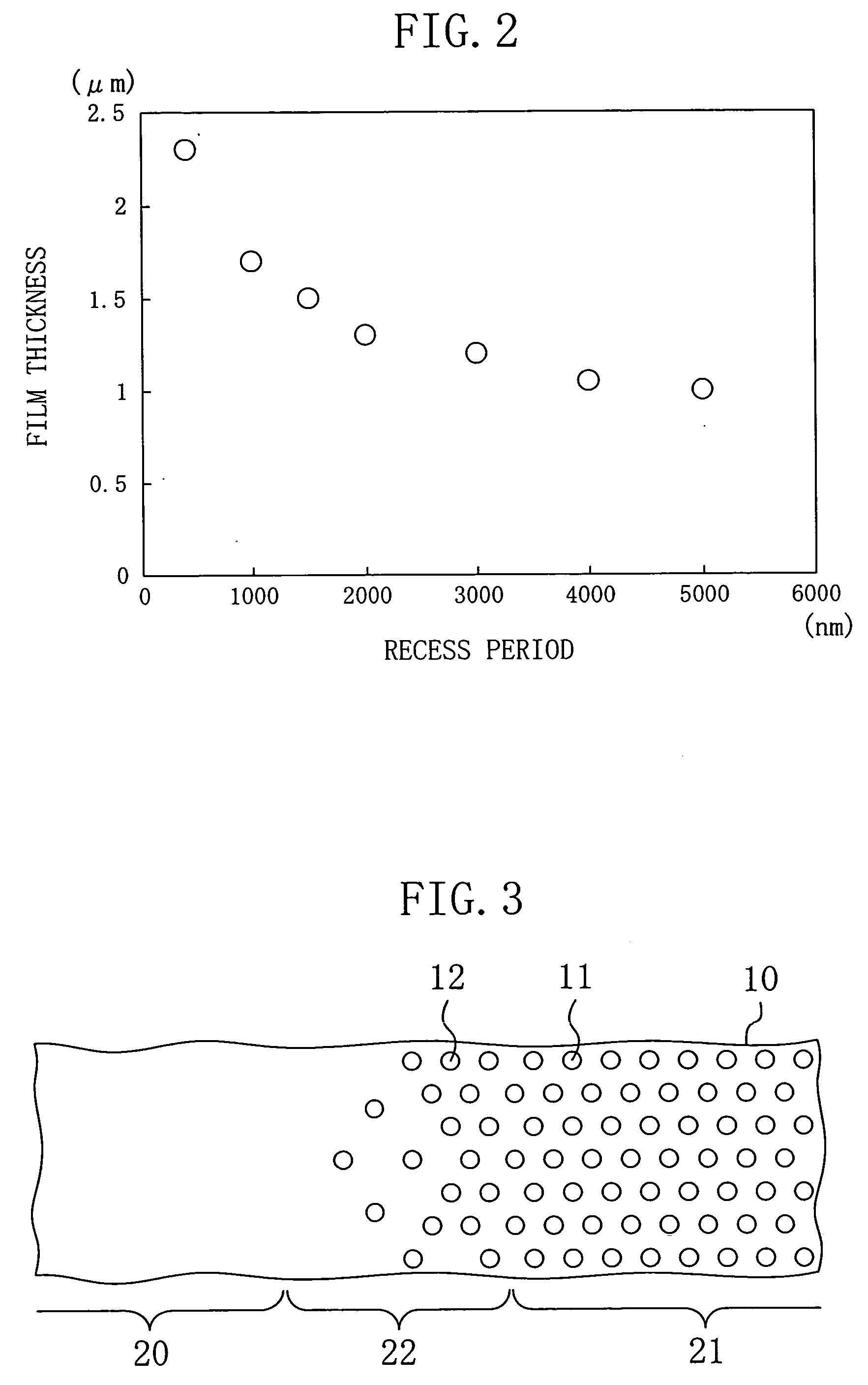Semiconductor device and method for fabricating the same
- Summary
- Abstract
- Description
- Claims
- Application Information
AI Technical Summary
Benefits of technology
Problems solved by technology
Method used
Image
Examples
first embodiment
[0044]A first embodiment of the present invention will be described with reference to the accompanying drawings. FIGS. 1A and 1B illustrate a substrate for forming a semiconductor device according to the first embodiment. FIG. 1A shows a plan structure thereof, and FIG. 1B shows a cross-sectional structure thereof taken along the line Ib-Ib in FIG. 1A.
[0045]The main surface of a substrate 10 is provided with: a flat region 20; a first indentation region 21 formed with first recesses 11; and a second indentation region 22 located between the flat region 20 and the first indentation region 21 and formed with second recesses 12 having a lower density than the first recesses 11.
[0046]In the case of forming a photonic crystal, in the first indentation region 21, the first recesses 11 are formed in a lattice pattern having a period almost the same in length as the wavelength of light emitted from an LED. For example, for a general GaN-based LED with a wavelength of 450 nm, it is sufficien...
second embodiment
[0064]A second embodiment of the present invention will be described below with reference to the accompanying drawings. FIG. 8 shows a cross-sectional structure of a semiconductor device according to the second embodiment. Referring to FIG. 8, the semiconductor device of the second embodiment is a light emitting diode (LED), and includes a substrate 30 made of sapphire and a semiconductor layer 50 formed on the substrate 30.
[0065]The substrate 30 is provided with: a flat region 40; a first indentation region 41 formed with first recesses 31; and a second indentation region 42 located between the flat region 40 and the first indentation region 41 and formed with second recesses 32 having a lower density than the first recesses 31. The first recesses 31 each have a diameter of 200 nm and a depth of 150 nm, and are arranged in a triangular lattice pattern having a period of 400 nm. The second recesses 32 each have a diameter of 200 nm and a depth of 150 nm, and are arranged in a triang...
third embodiment
[0070]A third embodiment of the present invention will be described below with reference to the accompanying drawings. FIG. 9 shows a cross-sectional structure of a semiconductor device according to the third embodiment. Referring to FIG. 9, the semiconductor device of the third embodiment is an LED having a photonic crystal formed on an emitting surface. Above a holding substrate 87, a semiconductor layer made by sequentially staking a p-type GaN layer 83, an InGaN active layer 82, and an n-type GaN layer 81 is held with a p-side electrode 84 interposed therebetween. On the n-type GaN layer 81, an n-side electrode 85 is formed, and photonic crystals each having a diameter of 200 nm and a height of 150 nm are arranged in a triangular lattice pattern having a period of 400 nm.
[0071]FIGS. 10A to 10D show a method for fabricating an LED with a photonic crystal according to the third embodiment in the order of its fabrication process steps. Referring to FIG. 10A, first, a first indentat...
PUM
 Login to View More
Login to View More Abstract
Description
Claims
Application Information
 Login to View More
Login to View More - R&D
- Intellectual Property
- Life Sciences
- Materials
- Tech Scout
- Unparalleled Data Quality
- Higher Quality Content
- 60% Fewer Hallucinations
Browse by: Latest US Patents, China's latest patents, Technical Efficacy Thesaurus, Application Domain, Technology Topic, Popular Technical Reports.
© 2025 PatSnap. All rights reserved.Legal|Privacy policy|Modern Slavery Act Transparency Statement|Sitemap|About US| Contact US: help@patsnap.com



